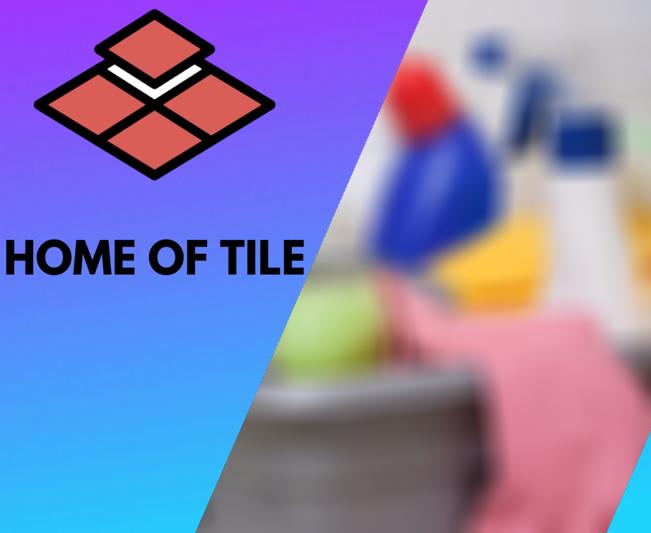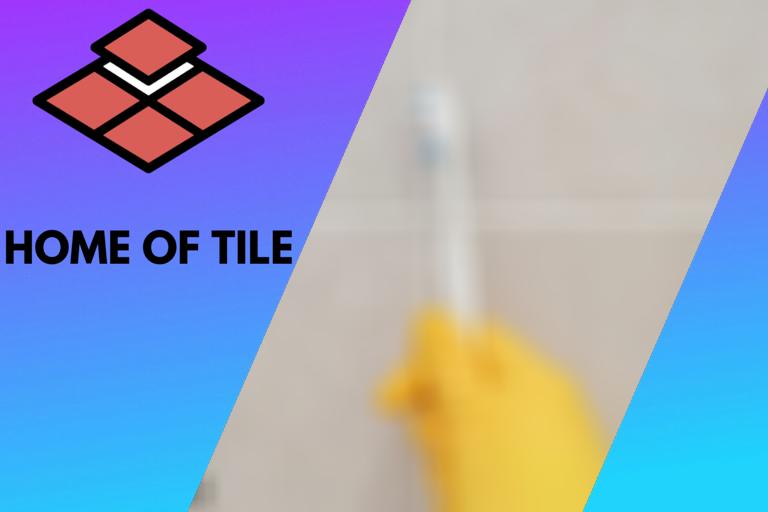What Is the Best Homemade Tile Grout Cleaner? What pros say
DIY and homemade cleaners are among the many ways to clean the tile grouts in your home. In fact, many homemade natural cleaners can do a much better job than bottled chemical products. But which one fares the best for making your tile grouts look good as new?
The best homemade tile grout cleaner is a blend of hydrogen peroxide (H₂O₂), baking soda, and regular dish soap. This solution works wonders for both kitchen and bathroom tiles. Baking soda helps with scrubbing, while H₂O₂ is excellent for whitening.

In this article, I will discuss the unique benefits of these ingredients, how they work together, and the nine steps to clean your tiles’ grouts using this solution. Let’s begin!
Contents
How an H2O2, Baking Soda, and Soap Cleaning Solution Works
A solution of hydrogen peroxide (H₂O₂), baking soda, and regular dish soap makes for the best homemade tile grout cleaner due to its natural effectiveness against bacterial and dirt buildup.
To help you understand why such a solution is so effective, I’ll break down how each ingredient works.
● Hydrogen Peroxide (H₂O₂)
Hydrogen peroxide (H₂O₂) is a well-known cleaning agent for bathrooms and kitchens. It’s a popular disinfectant and is mainly used as an alternative to bleach cleaners. Also, hydrogen peroxide can kill off harmful microorganisms like bacteria, viruses, and fungi.
The reason H₂O₂ works so well as a disinfectant is because of the extra oxygen molecule. As you know from your high school chemistry class, water is denoted by the symbol H₂O. When you add one more oxygen molecule to that, the resulting oxidization becomes potent against harmful germs.
H₂O₂ can also whiten your tiles without being too harsh on the cement, and brightens up the grout by removing the black, sticky grime that often appears between tiles.
Of course, I suggest being careful while using hydrogen peroxide. You need to wear protective gloves and keep it as far away from your eyes and nose as possible. Otherwise, you may suffer from side effects such as:
- Irritation
- Diarrhea
- Vomiting
You can use hydrogen peroxide on its own. However, if you want to make it as safe as possible and not suffer from the side effects I described above, you need to mix it with other chemicals that can dilute its toxic effects without toning down its cleaning power.
Fortunately, two such chemicals can be readily accessed at home — baking soda and regular dish soap.
● Baking Soda
While hydrogen peroxide removes stains and clears out tile grouts, baking soda helps to scrub out the stubbornest dirt buildups and stains. Baking soda also keeps the tiles clean and fresh, adding a shine to the finished product.
Baking soda is safer than most cleaning chemicals such as bleach, which exudes toxic fumes and can damage your tiles if used too frequently. Plus, it cleans up pretty nicely without you having to add harsh and artificial chemicals, making it a popular ingredient for DIY cleaners.
If you want to clean your grout with a baking soda mixture, ensure that you mop down the problem areas to scrub the tiles more easily. The best part of washing with baking soda is that it makes your tiles feel and look squeaky clean.
Note that baking soda should not be confused with baking powder. Although both of them can be used for baking (as their name suggests), only baking soda can work for cleaning. Baking soda is made of sodium bicarbonate, which helps to dissolve any buildup from mold, algae, etc.
● Regular Dish Soap
Aside from using it to clean your dishes, you can also pour regular dish soap into your hydrogen peroxide and baking soda mix to create the best homemade grout cleaner. Regular dish soaps are highly foamy and contain a blend of surfactants. Surfactants break the tension between solids and therefore work wonderfully for cleaning greasy and oily buildups.
I suggest mild dishwashing liquids as they’re safer than stronger soaps which can harm your grout’s composition.
Before you buy any dish soap for cleaning tile grout, check the label for its ingredients, and stay away from soaps that contain:
- Triclosan
- Phosphates
If you choose a gentler soap base, you can also use it to mop down the tiles before mixing it in the 3-ingredient homemade grout cleaner. All the soap needs is a little warm water, and you can have a mild cleaner ready in no time.
9 Steps To Make the DIY H₂O₂ Cleaning Solution
Here’s how you make the H₂O₂ cleaning solution:
- Step 1. Mix baking soda and hydrogen peroxide: Mix a half cup (64 g) of baking soda with one-fourth cup (59 ml) of hydrogen peroxide.
- Step 2. Add dish soap: Add one teaspoon (5 ml) of liquid dish soap and mix thoroughly. Now, you have a cleaner, scrubber, and degreaser.
- Step 3. Protection: Wear protective gloves and scoop out the paste with your fingers.
- Step 4. Apply the paste: Apply the paste over your grout using your gloved fingers.
- Step 5. Wait 10 min: Let it sit for 10-15 minutes, as the solution contains H₂O₂ which lightens the grout.
- Step 6. Scrub the grout: Using a nylon bristled brush, scrub over the grout lines.
- Step 7. Rinse the area: Rinse the grouts and tiles with steaming water to remove the grimes and solution.
- Step 8. Remove the residue: Use a mop and plain water to clean out the rest of the residue from the floor.
- Step 9. Dry the tiles: Let the tiles air dry.
Voila! Your tiles and grouts are now fresh, clean, and free from harmful viruses, bacteria, and fungi.
If you want to maintain a clean and sanitized bathroom, I suggest you use this solution to scrub your tile grouts at least four times a year. You can scrub more or less frequently depending on how severe the dirt buildup is.
I also suggest trying it out on small areas at a time. That way, you can assess how effective it really is before you apply it to everything.
Conclusion
A solution of hydrogen peroxide, baking soda, and regular dish soap is the most effective DIY tile grout cleaner for your home. Depending on your tile, kitchen, and bathroom dimensions, you can tweak the amount of each ingredient in the recipe I outlined above. All the ingredients should be readily accessible at home, and the solution is easy to make and use.







